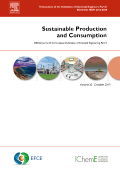International Journal – Sustainable Production and Consumption, 2020 Elsevier. Impact Factor 3.660 Free ACCESS to the paper till September 2020

Abstract
The current public and private policies pursuing environmental sustainability targets mandate incisive management of packaging waste, starting with those sectors that use virgin materials most. Food indus- tries and food supply chains adopt huge volumes of plastic crates, cardboard boxes, and wooden boxes as transport packaging, thereby representing a hotspot and an urgent call for scholars and practitioners to address. Whilst wooden and cardboard boxes are disposable solutions, plastic containers can be em- ployed as infinitely reusable and recyclable packages but require complex logistic systems to manage their life cycle. Optimization techniques can be exploited to aid the design and profitability of such complex packaging networks. This paper falls within the scarce literature on the design of pooling networks for reusable containers in the food industry. It proposes a strategic mixed-integer linear programming model to design a closed-loop system from the perspective of the packaging maker responsible for serving a food supply chain. The container’s lifespan, i.e. the number of cycles a package can be reused before recycling, represents a crucial aspect to consider when modeling such networks. Incorporating lifespan constraints within the proposed closed-loop network design model is the main novel contribution we provide to the literature. This model is applied to a real-world instance of an Italian package pooler op- erating with a consortium of large-scale retailers for the distribution of fruits, vegetables, bakery, and meat products. A multi-scenario what-if analysis showcases how the optimal network evolves according to potential variations in the packaging demand, as well as in the container lifespan, demonstrating how to lead packaging makers to the profitability and the long-term sustainability of the closed-loop network.
© 2020 Institution of Chemical Engineers. Published by Elsevier B.V. All rights reserved.